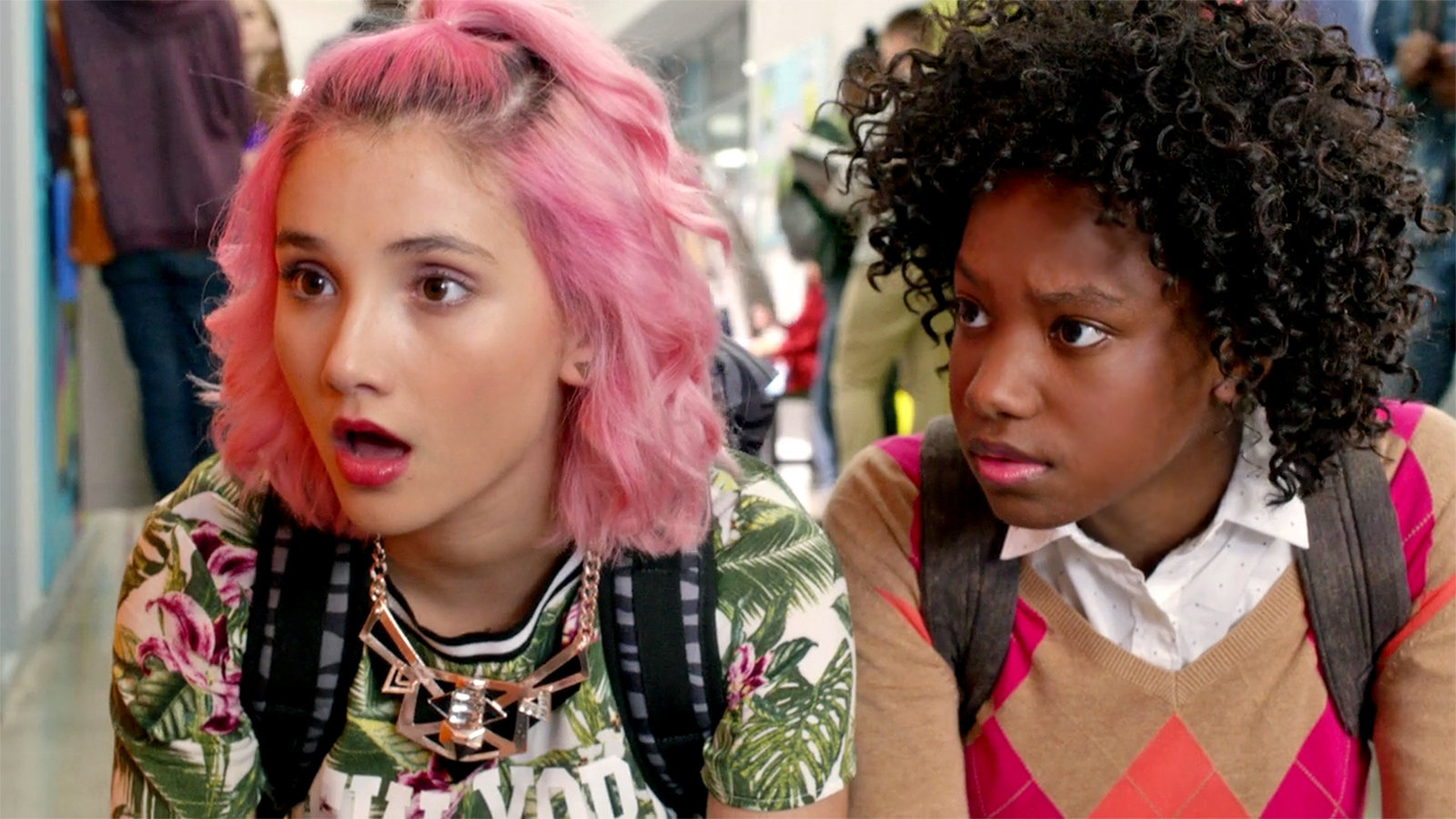The hit Canadian television series, “Degrassi,” created by Linda Schuyler, has been all over pop-culture news lately after rapper Drake reunited with his old castmates to film his latest music video, “I’m Upset.”
Drake — known simply as Aubrey Graham at the time — starred as Jimmy Brooks, one of the show’s most popular main characters who was a basketball star before becoming paralyzed after a devastating school shooting. For the devoted fans who have watched and re-watched the long-running show, this music video was a surprisingly nostalgic way to pay homage to the best teen drama show to ever grace television.
But what exactly makes “Degrassi” the beloved franchise it has become today? The series viewers know and love, “Degrassi: The Next Generation” — renamed “Degrassi” for seasons 10-14 — was the fourth addition to the franchise, originally created by Schuyler in 1979 with “The Kids of Degrassi Street.”
The series has never ceased to gain a mass following, with “Degrassi: Next Class,” currently streaming on Netflix. In a world chockfull of angsty teen dramas, such as Selena Gomez’s “13 Reasons Why,” this Canadian super-show has managed to not only become a fan-favorite of the highest regard but has grown to deserve the title of a true classic for teenage television.
Here are four reasons why “Degrassi” is the best teen drama of all time and why it was extremely important and necessary when it aired.
1. It Tackled Heavy Topics with Grace
Definitively the most important reason that made “Degrassi” A+ television was its ability to handle subject matter that was often dark and unsettling. Having coined the catchphrase, “it goes there,” this show was built off the concept of addressing intense but realistic issues that plague teenagers everywhere. Some of these include: drug addiction, sexuality, eating disorders, suicide, sexual assault, divorced parents, safe sex, terminal illness, bullying and religion.
However, what truly makes “Degrassi” superior is not simply the fact that they tackled these issues, but that the writers and producers’ primary goal was to depict how teenagers could address and manage such situations with the help of their peers and, more importantly, their superiors, such as parents, teachers and guidance counselors.
Unlike shows such as “13 Reasons Why,” in which asking for help from guidance counselors and even parents seems futile, “Degrassi,” hammered in the idea that you are never alone in your struggle and that there is always someone out there on your side. The character Mr. Simpson, a teacher turned principal, was one of the most popular characters on the show for this very reason. He cared about his students, and the show explicitly demonstrated how and why he could be trusted when these types of situations arise.
Additionally, in another comparison to “13 Reasons Why,” “Degrassi” never sensationalized its conflicts. Whereas in the former, topics such as suicide were gone into grave detail, even showcasing the method in which the suicide was carried out. The latter never tried to make the pain students dealt with into anything more than what it was: a serious problem that needed to be dealt with and handled eloquently.
These situations are shown throughout the series, such as Paige seeking out counseling and law enforcement after getting raped, and Ellie talking about her self-harm within a safe group of recovering students.
Even Schuyler said in an interview with CP24, “We’re trying to acknowledge that these things are happening to our kids, and we’re trying to give our kids the tools to [say], ‘OK, you’re faced in a situation and somebody expects this from you at a party, how do you deal with it?’ rather than being very sensational.” “Degrassi” is a show that aims not simply to entertain, but to provide guidance as well.
2. It Was (and Is) Consistent
“Degrassi,” has been on since 1979, with OG characters such as Archie “Snake” Simpson, Caitlin Ryan, Joey Jeremiah and Christine “Spike” Nelson appearing as students in “The Kids of Degrassi Street,” “Degrassi Junior High” and “Degrassi High.”
Part of what makes the show so great is that the characters don’t appear in one series and then disappear forever. Rather, the lives of these students live on. All the characters that were once kids in the earliest episodes of the franchise re-emerge in “Degrassi: The Next Generation” as teachers, parents and family friends.
Additionally, they don’t serve minor roles. The adults of “Degrassi” are as pivotal to the cast as the teenagers are. For instance, Joey takes in Craig as his own after his father abuses him, and Simpson marries Emma’s mom Spike. The fact that the franchise’s old characters are there to guide the younger characters through issues that they themselves experienced back in the ’80s creates a timeline of consistency and growth unmatched by other television shows of the same genre.
Furthermore, characters that go off to graduate in certain seasons of the show aren’t cast out forever. Viewers can see the students of Degrassi High that they know and love pop up every now and again in familiar places like “The Dot.” Once again, the “Degrassi” franchise isn’t just a show, it’s a world. These characters grow just as the viewers do.
3. The Cast Is Age Appropriate
One thing I’ve noticed in my many years of watching teen-oriented television is that the characters that are supposed to be “teenagers” in some shows look way above the age they are supposed to be portraying. More often than not, fifteen-year-olds are played by twenty-year-old high school graduates who are already sprouting facial hair, an issue that the creators of “Degrassi” purposefully tried to combat.
Unlike similar shows at the time, such as “Buffy the Vampire Slayer” and “Dawson’s Creek,” this show wanted to make sure that their cast was the right age for teen audiences to deeply relate to the characters as they grew up and went through puberty. For instance, Miriam McDonald, who played one of the main characters on the show, was cast when she was 13 and started off the show in seventh grade. The same goes for the rest of the cast.
This style of casting is extremely important and eye-opening when watching the show. Not only is it accurate, but you are able to actually watch these actors grow up on the screen. Audiences see kids go from having braces and acne to shiny teeth and clear skin. The amount of “glow-ups” seen on this show is seriously crazy.
Manny changes from super shy to a total baddie, J.T. finally gains some height and, of course, there’s Drake’s character Jimmy Brooks who goes from a cute, afro-sporting kid to, well, Drake. If you’ve ever been pissed off that all the high school freshman in “Teen Wolf” look astronomically hotter than the high school freshman you know, then I beg you to check out “Degrassi.”
4. It’s Nostalgic AF
Being an extremely nostalgic person myself, I have to say that “Degrassi” truly brings me back to my younger days when I used to stay up late with my older sister, catching re-runs of “Degrassi” on Teen Nick. For anyone who used to be glued to the television watching this show, just the word “Degrassi” triggers some fond memories.
The franchise and its characters are iconic. Only a few shows out there are able to be referenced with such a wide-range of people knowing exactly what you’re referring to. Little things, like the fact that the characters’ Canadian accents pop up when they say words like “sorry,” how the phrase “Jimmy gets shot” resonates with millions of people and just the down-right legendary dramatic amplitude of the series, are what makes “Degrassi” what it is. And, of course, one cannot forget the best thing about this show: the theme song and opening credits.
As the camera goes through the halls showing the different characters partaking in school activities, the theme, “Whatever It Takes,” composed by Jim McGrath plays in the background. Across the globe, viewers listen to those instantly recognizable lyrics that echo the message of the show’s heart: “Whatever it takes, I know I can make it through.”

















